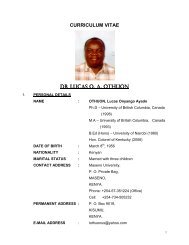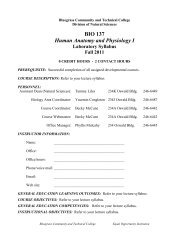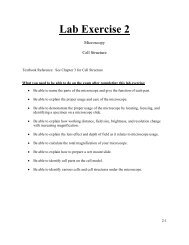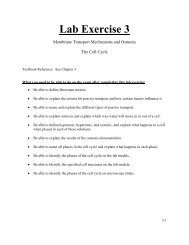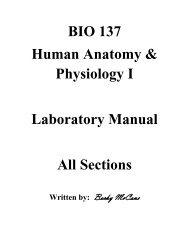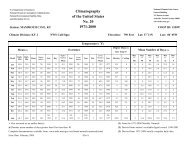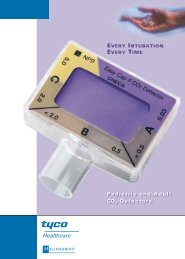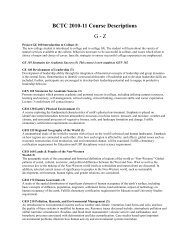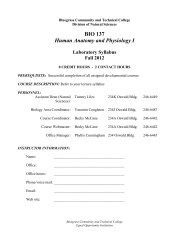If you do not want a motor to re- start when power is lost, then is
If you do not want a motor to re- start when power is lost, then is
If you do not want a motor to re- start when power is lost, then is
You also want an ePaper? Increase the reach of your titles
YUMPU automatically turns print PDFs into web optimized ePapers that Google loves.
Fuses/ Circuit B<strong>re</strong>akers (1 of 2)<br />
• Diffe<strong>re</strong>nce between fuse/circuit b<strong>re</strong>aker<br />
protection and overload protection:<br />
– Fuses (with the exception of dual element time<br />
delay types) and circuit b<strong>re</strong>akers protect circuit<br />
from grounds and short circuits only.<br />
– Protect Mo<strong>to</strong>r Circuit and Power system from a<br />
short in the <strong>mo<strong>to</strong>r</strong> circuit.<br />
– C.B.’s a<strong>re</strong> mo<strong>re</strong> expensive but can be <strong>re</strong>set, Fuses<br />
a<strong>re</strong> less expensive but can be <strong>re</strong>al pain <strong>to</strong> <strong>re</strong>place.<br />
Overload Relays (2 of 2)<br />
• A fuse or circuit b<strong>re</strong>aker <strong>do</strong>es <strong>not</strong> protect<br />
the <strong>mo<strong>to</strong>r</strong> from an overload.<br />
Dual Element Fuses<br />
• They provide both short circuit and overcur<strong>re</strong>nt<br />
protection.<br />
• Fuse link provides short circuit protection.<br />
• Solder link provides over-cur<strong>re</strong>nt<br />
protection with time delay.<br />
• Work well, a<strong>re</strong> cheaper than Resetable<br />
types, but can<strong>not</strong> be <strong>re</strong>set<br />
Overloads (1 of 2)<br />
• Overload protection provides protection <strong>to</strong> the<br />
<strong>mo<strong>to</strong>r</strong> from overload conditions (excessive<br />
cur<strong>re</strong>nt through the <strong>mo<strong>to</strong>r</strong> windings).<br />
– “Protect against a little <strong>to</strong>o much cur<strong>re</strong>nt for a little<br />
<strong>to</strong>o long”<br />
• “A little <strong>to</strong>o much Cur<strong>re</strong>nt” <strong>is</strong> typically 125% Name-plate<br />
• “A little <strong>to</strong>o long” <strong>is</strong> typically 2 minutes<br />
Overload Properties<br />
• Must have means of sensing <strong>mo<strong>to</strong>r</strong> cur<strong>re</strong>nt<br />
• Must have some type of time delay<br />
• Two operating sections<br />
– Cur<strong>re</strong>nt sensing and contact section<br />
Cur<strong>re</strong>nt<br />
Sensor in<br />
Mo<strong>to</strong>r<br />
Circuit<br />
OL Contacts<br />
in Control<br />
Circuit<br />
2 Categories of OL Relays<br />
1) Thermal<br />
Responds <strong>to</strong> the Heat due <strong>to</strong> Cur<strong>re</strong>nt<br />
Flow<br />
2) Magnetic<br />
Responds <strong>to</strong> the Magnetic field due <strong>to</strong><br />
Cur<strong>re</strong>nt Flow<br />
3/3/2013<br />
2




